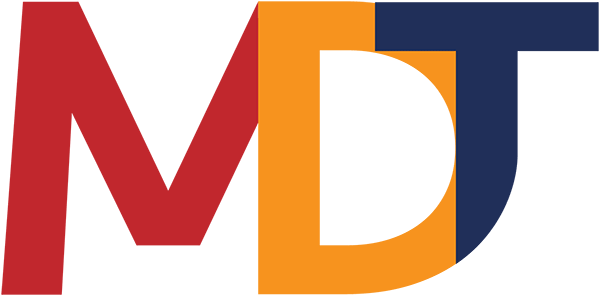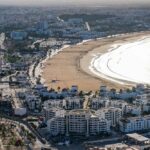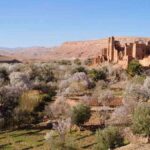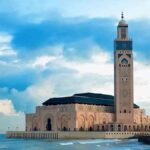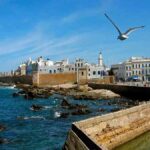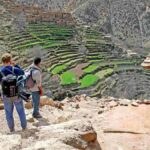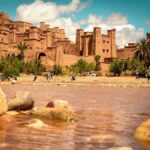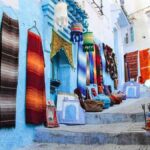
Planning connectivity for your trip? Pair your data plan with our Morocco Desert Tours to match coverage with the routes you’ll actually drive. This guide explains the smartest way to get connected—whether you prefer a physical SIM you buy in town or an eSIM you activate before the flight. We’ll compare the main operators, show where to buy, how much data you actually need, and the exact steps to set everything up on iPhone and Android.
For most travelers, choose Maroc Telecom for the widest overall coverage, Orange for excellent value in cities, or an eSIM if you want instant data on arrival. Buy in city stores (cheaper than airports), bring your passport, and make sure your phone is unlocked. Enable data, set APN if prompted, and test before you leave the shop.
Table of contents
- What You Actually Need to Buy?
- Morocco SIM vs eSIM: Pros and Cons
- Network Comparison (At-a-Glance)
- Where to Buy: Airport vs City
- Prices & Plans: 2025 Snapshot
- Coverage & Speeds by Region
- Step-by-Step Setup (How To)
- Hotspot/Tethering & Fair-Use
- Keep Your WhatsApp Number (Dual-SIM Tips)
- Top-Up & Plan Management
- Troubleshooting
- Safety & Scams to Avoid
- What to Bring: Quick Checklist
- Alternatives to a Local SIM
- FAQs
What You Actually Need to Buy?
1) Trip length
- ≤ 7 days: A small starter pack or a 7-day eSIM (3–10 GB) usually suffices.
- 8–14 days: Aim for 10–20 GB, especially if you use Maps, Instagram Reels, and ride-hailing.
- 15+ days: Prefer a monthly pack (physical SIM or eSIM) with easy top-ups.
2) Where you’re going
- Cities & Coast only (Casablanca, Rabat, Tangier, Agadir, Essaouira): Any major operator works; value often wins.
- Atlas & Sahara (Imlil/Toubkal, Dades/Todra, Merzouga, Zagora): Prioritize coverage, not just price.
3) Your device
- Unlocked phone? Essential. Check with your carrier at home.
- eSIM support? Most recent iPhones/Android flagships support eSIM; budget phones may not.
4) Your usage
- Hotspot needed? Confirm the plan allows tethering.
- Dual-SIM strategy? Keep your home number active for calls/OTP; use a Moroccan line for data.
Recommendation logic:
- If you’re crossing the Atlas to Merzouga, a 3-day Sahara tour from Marrakech pairs well with a coverage-first SIM like Maroc Telecom.
- Urban itinerary (cities/coast): Orange or eSIM with strong city performance.
- Arriving late/need instant data: Buy an eSIM before you fly; consider switching to a cheaper city SIM later.
Morocco SIM vs eSIM: Pros and Cons
eSIM (digital)
- Pros: Buy and activate before you land; instant data on touchdown; no store visit; keep your physical SIM in place; easy top-ups via app.
- Cons: Slightly pricier per GB than local city SIMs; compatibility varies; switching devices mid-trip can be tricky; some plans restrict hotspot use.
Physical SIM (local)
- Pros: Best value per GB; wide choice of bundles; staff can help set APN and test data; strong coverage with the right operator.
- Cons: Requires passport and a store visit; airport prices can be higher; you must keep track of the tiny SIM and tray pin.
Pro tip: Many travelers start with an eSIM for Day 1 (airport Wi-Fi, taxis, hotel check-in) and then buy a cheaper physical SIM in the city if they need more data for the rest of the trip.
Network Comparison (At-a-Glance)
| Operator | Overall Strength (typical) | Best For | Common Tourist Packs* | Hotspot Allowed?** | Where to Buy |
| Maroc Telecom | Historically widest national coverage | Atlas & Sahara / road trips | 7–30-day data bundles | Often yes | Branded stores, kiosks, resellers |
| Orange Morocco | Strong urban performance & good value | Cities/coast & general use | 7–30-day combo/data bundles | Often yes | Branded stores, malls, resellers |
| Inwi | Competitive value in many urban areas | Budget-minded urban travelers | 7–30-day data bundles | Often yes | Branded stores, resellers |
* Exact names/allowances change periodically; choose validity + data that match your trip.
** Some plans restrict hotspot or throttle beyond a fair-use cap; test in store.

Where to Buy: Airport vs City
Airports (Marrakech RAK, Casablanca CMN, Fes FEZ, Tangier TNG, Agadir AGA)
- Pros: Fast and convenient after a long flight; English/French-speaking staff; quick KYC (passport scan).
- Cons: Plans can be more expensive and offer less data than city shops; queues during peak arrivals; late-night kiosks not always open.
City Stores & Authorized Resellers
- Pros: Better prices and more plan choices; easier to resolve issues; you can compare operators on the spot.
- Cons: You need maps/transport to get there (download offline maps first); opening hours vary.
What to bring & do at the counter
- Passport (SIM registration is mandatory).
- Unlocked phone (test a foreign SIM if unsure).
- Ask staff to insert/activate, configure APN, and run a speed test before you leave.
- Photograph the SIM sleeve (ICCID) and any top-up receipt. Keep them.
For visas, money, transport, and connectivity in one place, see our Morocco travel guide.
Prices & Plans: 2025 Snapshot
Exact offers change, but these ballparks help you budget:
- 7-day visitors: Expect small bundles (3–10 GB) at a tourist-friendly price point.
- 14–30 days: 10–30 GB plans are most popular; adding local minutes costs little.
- Heavy data users: Consider 30–60 GB “monthly” bundles; ask whether hotspot is included or capped.
- eSIMs: Typically cost more per GB but win on convenience and pre-arrival setup. Many allow top-ups in app.
How much data do you really need? (Typical)
- Maps + messaging (light social): 3–5 GB/week
- Maps + social + booking apps + email: 6–10 GB/week
- Video calls + heavy IG/TikTok/Reels: 10–15 GB/week
Reality check: Morocco’s intercity stretches and mountain roads still have patchy coverage. Download offline maps for your route, especially for the Tizi n’Tichka pass, Dades/Todra, and the Erg Chebbi/Erg Chigaga approaches.
Coverage & Speeds by Region
Cities & Coast (Casablanca, Rabat, Tangier, Agadir, Essaouira)
- You’ll find solid 4G and increasingly modern networks in dense areas. Urban canyons (narrow medina streets or thick walls) can affect signal indoors—step outside for a quick fix. Speeds vary by time of day and crowding.
Atlas Mountains (Marrakech → Imlil/Toubkal, Ouirgane, Ourika)
- Expect pockets of good coverage in towns and valleys, with gaps on winding roads and at higher elevations. If you’re driving, don’t count on data in every pass.
Sahara & Pre-Sahara (Merzouga/Erg Chebbi, Erfoud, Rissani, Zagora/Erg Chigaga, M’hamid)
- Villages and main roads often have coverage; dunes and remote tracks frequently do not. Camps sometimes provide Wi-Fi near the dining tent; speeds are serviceable for messaging and email, less so for heavy video.
- Signal can drop on dune approaches—review routes and expectations in Erg Chebbi vs Erg Chigaga before you choose a carrier.
Intercity Travel
- On highways between major cities, coverage is decent but not continuous. Download playlists and podcasts before you go.
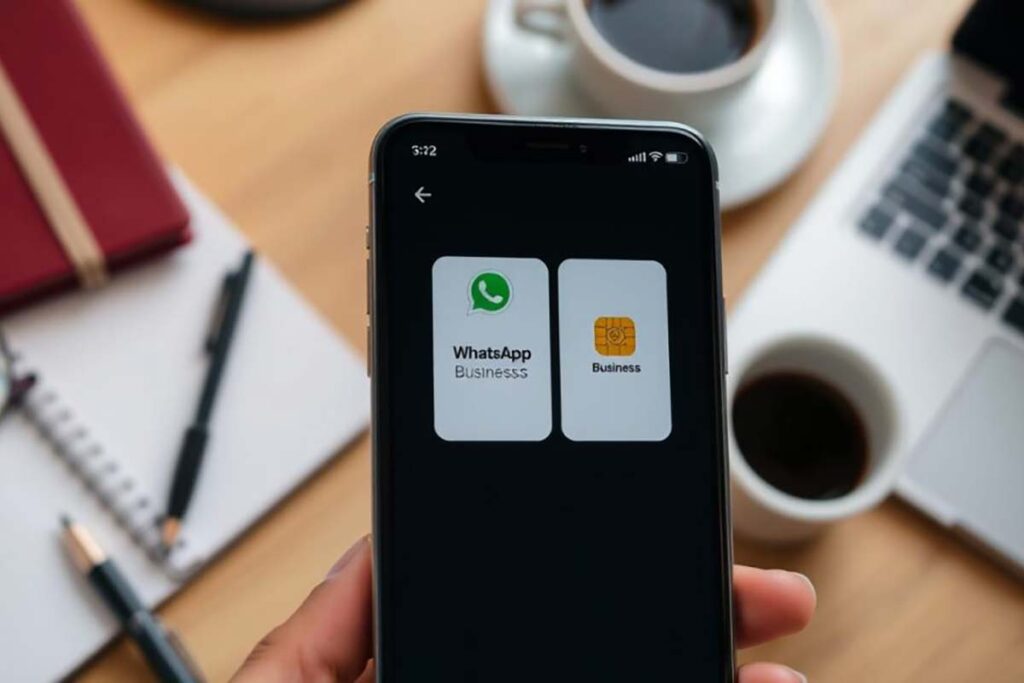
Step-by-Step Setup (How To)
Below are generic steps; the shop may complete most for you. Keep these for reference.
iPhone (Physical SIM or eSIM)
- Insert the SIM or scan your eSIM QR (Settings → Cellular → Add eSIM).
- When prompted, set the new line as Cellular Data (you can keep your home line for calls/WhatsApp).
- Go to Settings → Cellular → Cellular Data Options and enable Data Roaming for the new line.
- If data doesn’t start, open Cellular → [Your Moroccan Line] → Cellular Data Network and verify the APN (the shop can provide it).
- Toggle Airplane Mode on/off, then run a browser or map search to test.
Android (steps vary slightly by brand)
- Insert SIM or add eSIM (Settings → Network & Internet → SIMs / eSIM).
- Select the Moroccan line as Preferred for Mobile Data.
- Turn on Data Roaming for that line.
- If needed, edit Access Point Names (APN) under Mobile Network → Advanced; use the APN provided in store.
- Toggle airplane mode, then test data and messages.
If you need Hotspot:
- iPhone: Settings → Personal Hotspot.
- Android: Settings → Hotspot & Tethering.
- Try a quick test; some plans throttle or block hotspot on entry-level bundles.
Hotspot/Tethering & Fair-Use
Many Moroccan plans allow personal hotspot, but the allowance may be:
- Capped (e.g., a portion of your data usable for tethering).
- Throttled after a threshold.
- Disabled on the cheapest tourist SIMs.
What to do: Ask at purchase time, test hotspot in store, and consider moving up one plan tier if tethering is essential for laptops or tablets.
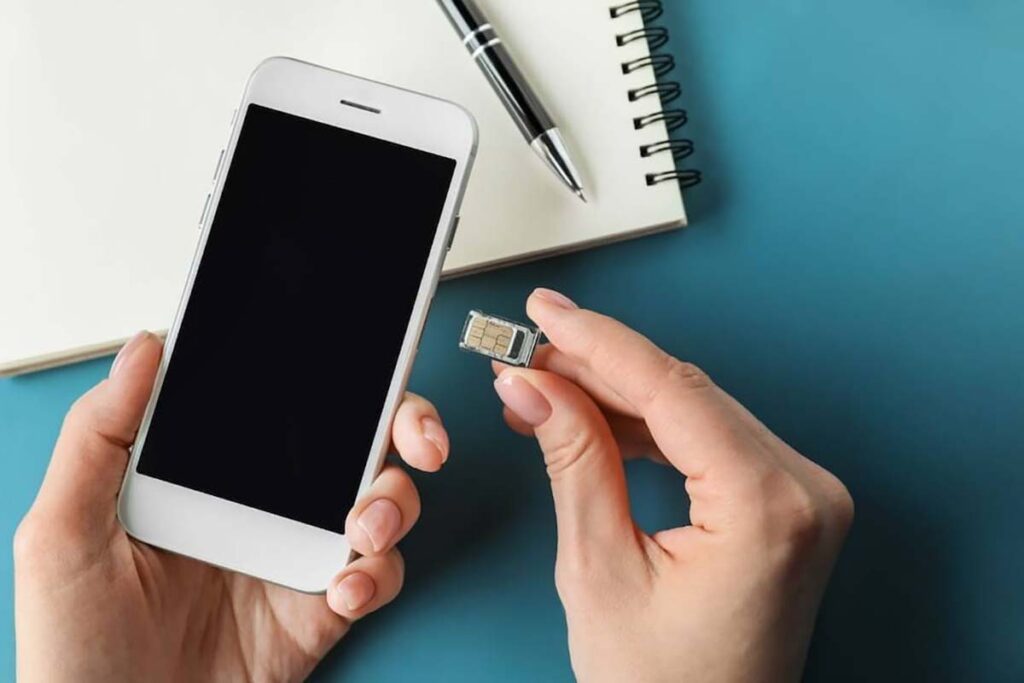
Keep Your WhatsApp Number (Dual-SIM Tips)
- Keep WhatsApp on your home number: In WhatsApp → Settings → Account, confirm the number tied to your account; do not re-verify unless you want to switch.
- Use the Moroccan line for data only: Set Data Line = Moroccan SIM/eSIM, Voice Line = your home SIM (or disable voice on the home SIM to avoid roaming calls).
- iMessage/FaceTime (iPhone): If your Apple ID is tied to your home number, you can keep it that way—just let data run through the Moroccan line.
- Bank/OTP codes: If your bank sends SMS to your home number, keep that line active (dual-SIM) or set up app-based authentication before travel.
Top-Up & Plan Management
Top-ups (recharge):
- Buy scratch cards or top-up at shops; the cashier can apply credit directly to your number.
- Official operator apps often support topping up with cards or local payment methods; some support international cards.
Checking balance & bundles:
- Shops can show you in the app; ask them to install it and link your number.
- USSD codes vary by operator; store staff will demonstrate the correct one for your plan.
- Keep your SIM sleeve and initial receipt—they help if you need assistance later.
Extending validity:
- Some bundles extend when you add credit; others require buying a new bundle. Ask the clerk to show next steps on your phone screen so you can repeat them yourself.
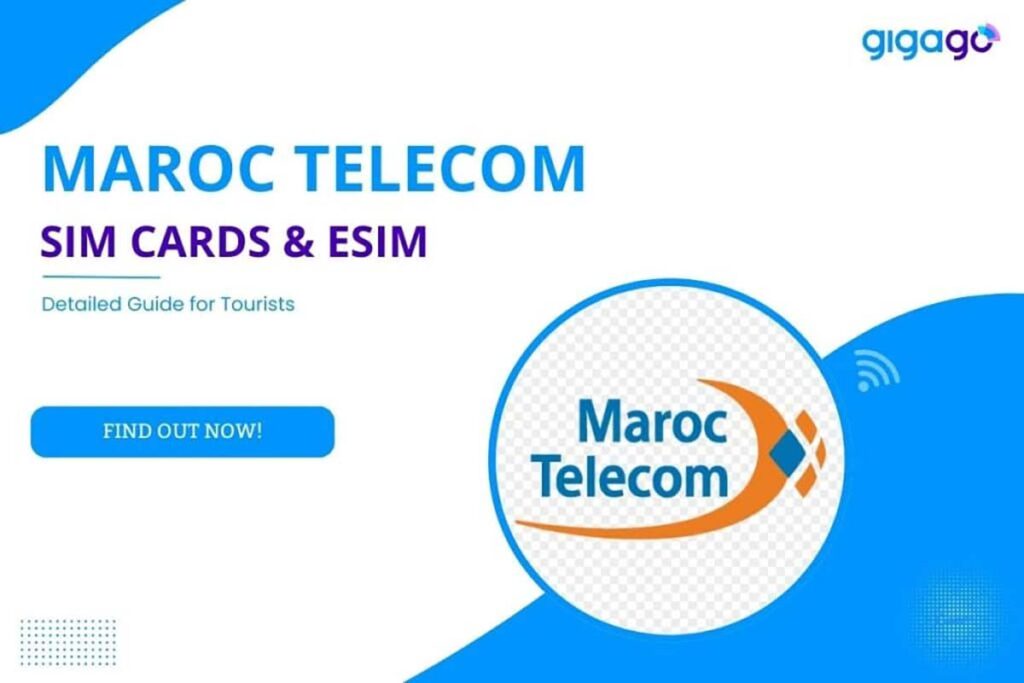
Troubleshooting
No data after activation
- Confirm the Moroccan line is selected for data.
- Toggle Data Roaming on (this is required for some local networks when using dual-SIM).
- Re-enter or reset APN settings to default, then add the operator APN again.
Slow speeds
- Peak-time congestion happens in popular areas. Try again off-peak, move outdoors, or select a different network mode (4G vs 5G/Auto).
- Check if you hit a throttle or fair-use cap—buy an add-on or switch to a larger bundle.
Calls/SMS not working
- Make sure your plan includes minutes/SMS if you need them; many tourist bundles are data-only by default.
- iPhone users: verify Voice Line settings under Cellular; Android: check Preferred SIM for Calls.
Lost SIM / eSIM profile
- Physical SIM: visit a branded store with your passport to re-issue your number.
- eSIM: Some providers let you re-download within their app; others require buying a new profile. Keep your provider login handy.
Safety & Scams to Avoid
- Unofficial resellers charging “tourist tax”: buy from branded stores, airport kiosks, or reputable resellers only.
- SIM not registered in your name: registration is mandatory—ensure the clerk completes it with your passport and shows your number on screen.
- Upsells you don’t need: ask for the cheapest plan that fits your data and hotspot needs; don’t pay for unlimited social unless you actually use it.
- Leaving the shop without testing: always load a webpage, check maps, and run a hotspot test before you go.

What to Bring: Quick Checklist
- Unlocked phone (confirm before travel).
- Passport (for SIM registration).
- eSIM QR saved offline (screenshot + PDF), if you’re using eSIM.
- SIM ejector pin (or paperclip).
- Power bank (long intercity drives can drain your battery).
- Offline maps downloaded for your routes (Atlas, desert, intercity).
- follow our Morocco desert packing list to avoid last-minute shop runs.
Alternatives to a Local SIM
- International roaming: Convenient but often pricey; check your carrier’s “travel pass” or daily roaming cap.
- Pocket Wi-Fi (MiFi): Useful for families or photographers with multiple devices; must be charged and carried; speeds depend on local networks.
- Wi-Fi only: Many riads, cafés, and coworking spaces offer Wi-Fi. It’s fine for messaging and email, but unreliable on the road.
FAQs
Do I need a passport to buy a SIM in Morocco?
Yes. Carriers must register the SIM to your identity. Bring your physical passport.
Can I buy a SIM late at night at Marrakech or Casablanca airports?
Often yes, but hours aren’t guaranteed across all arrivals. If you’re landing very late, consider buying an eSIM in advance.
Which carrier has the best coverage in the Sahara?
Coverage shifts over time, but Maroc Telecom is generally regarded as having the broadest reach in remote areas. For dunes and off-road tracks, expect gaps with any carrier.
How much data do I need for a 7-day trip?
Most travelers are comfortable with 6–10 GB if they use Maps, social apps, and occasional video calls. Heavy streamers should plan for more.
Does hotspot/tethering work on tourist plans?
Usually, but entry-level packs may cap or throttle tethering. Test in store and upgrade if needed.
eSIM vs physical SIM in 2025—what’s cheaper?
City-bought physical SIMs usually deliver the best value per GB. eSIMs win for convenience and Day-1 connectivity.
